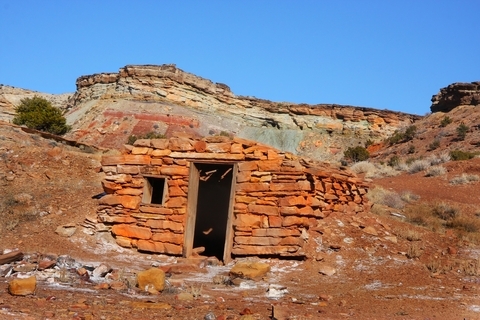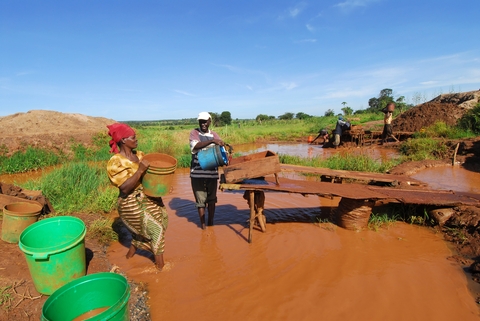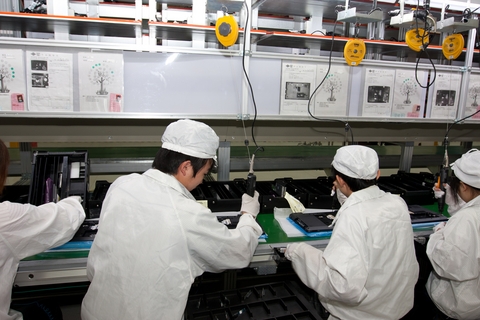The Ugly face of high tech
9 December 2011
3,854 views
No Comment
It took the death of 29 New Zealand miners to make the world sit up and pay attention about mining accidents and the unfair regulation and working conditions of miners. Although the 33 Chilean miners survived last August, the fact they became trapped for so long also highlight the poor working condition of the mines. However, the lid has yet to be lifted on the scale of mysterious deaths that befall women and children working under inhuman conditions in many others countries.
Yet a far more tragic Congolese mining disaster of December 10, 2010 in which 20 miners, including two women and five children, died occurred weeks after the world news of the methane gas explosion in New Zealand on November 19, but failed to capture the world’s attention.
According to a report from the International Peace Information Service (IPIS), 30 per cent of Congolese school children are forced to kneel and dig in the underground mines with their bare hands.
Every day, foreign mining companies are smuggling coltan out of the Democratic Republic of Congo illegally. The illegal trafficking of coltan has stolen Congolese children’s childhood, enslaving millions of them digging coltan from dawn to sunset for 20 cents a day. This is the same coltan which trades on western black market £350 a pound.
Unlike in Chile and New Zealand, the Congolese workers were mining a little-known mineral. Yet it is one on which millions of us rely. Coltan is one of the key components in computers and mobiles phones.
According to Celine Moyroud and John Katunga from the Agency International for Development (USAID) and the Government of Sweden and Switzerland:
“At the height of the war, the conflict developed an international character …coltan is among the strategic minerals found in Congo and form the basis of high-tech global commodity chain. With more than 85% of Global coltan reserves located in Congo, a number of analysts have argued that international demand for the metal has become one of the driving forces behind the war in DRC.”
DRC is awash with coltan and is one of the most mineral-rich countries in the world. Yet it does not have basic facilities, such as roads, making it difficult to regulate safety hazards and child labour. Ironically, the country is called a democratic republic, yet the state controls only five per cent of its coltan whereas international mining corporations receive 95 per cent of the profit.
Mining companies are smuggling raw coltan out of DRC under poor regulation, dealers, among others, are paying Congolese militias mostly in arms, rather than cash to fuel the conflict.
In 2006, the US Department of Labour listed DRC as the country with “the worst forms of child labour”. And, in October 2007, the US government announced it would donate US$16 M through the Save the Children Foundation to DRC, Togo and Uganda, to help purge child labour, but unfortunately nothing much has changed.
Every time we buy an expensive car, a smart phone, an mp3 player, designed laptop, or a Play Station, we are all indirectly involved in the bloody coltan trade and unknowingly encouraging child slavery in Congo.
These technologically advanced nuclear weapon, planes, cars, wireless systems, DVD players and toys depend on the coltan trade. Children who will never know what a computer game looks like are dying every day for the sake of it.
Broadly speaking most international media still portrays the child death rate in East DRC as an ethnic conflict.
The Congolese have been hit where it hurts most: in their youth. Child slavery is synonymous with lost generations and who will replace those who perish in the coltan mines?
A straw poll of members of the British public carried out between December 15, 2010, and January 25, 2011, found that two- thirds of respondents were unaware of any link between coltan and their electronics goods.
Claire Burton, from London, said she felt “sickened about child labour”, adding: “This is unfair as I always though when watching documentary on TV, that DRC was such a poor country, with no food or mineral resource.”
High-tech is not synonymous with immorality. The French philosopher Henri Bergson, who won the Nobel Prize in literature 1927, once advised mankind to shape up high-tech evolution, to add to it a supplement of soul or consciousness. Bergson strongly believed that the modern man should be equally focused on both high- tech and its consequences. Mechanical progress should be accompanied by morals to prevent the modern man to turn into a monster.
Bergson raised awareness on a widespread belief of his century: that the spectacular progress in mechanical invention will automatically raise the moral level of mankind.
According to him, experience has proved technological development of a society does not automatically result in the moral perfection of the men living in it. If morality does not follow high-tech evolution, man will turn against man and destroy one another until nothing is left.
Since 1927, Bergson’s philosophy has continued to endure, but it seems like the 21st century high tech is back at square one, with neither soul nor moral as additional value.
The Chilean miners were lucky enough to survive their mining accident, and even more, have been turned into celebrities – signing multimillion-dollar book deals, appearing on US talk shows and, in one case, landing a role in one of Brad Pitt’s latest film projects.
Unlike the Chilean miners, Congolese women and children miners might not have the opportunity to appear on big screen – or even the desire.
All most of them are after is a fairer share of the profits from the mineral resource with which their country is naturally blessed.
If 99 per cent of our electronic goods depend on coltan, perhaps pressure should also be brought to bear on the manufacturers who used it.
Only sustained political will, combined with greater public awareness in the West of lives lost to coltan, can free children from slavery.


 (18 votes, average: 4.83 out of 5)
(18 votes, average: 4.83 out of 5)

